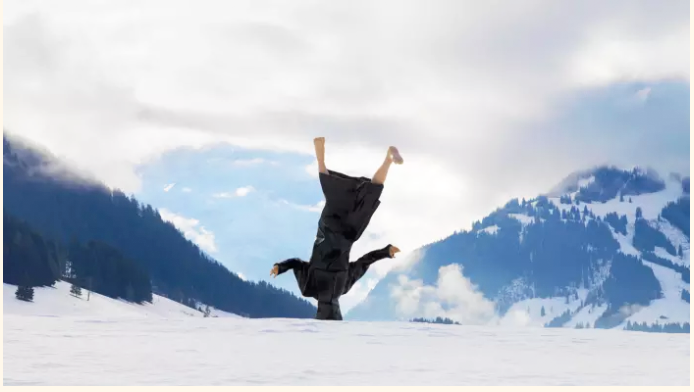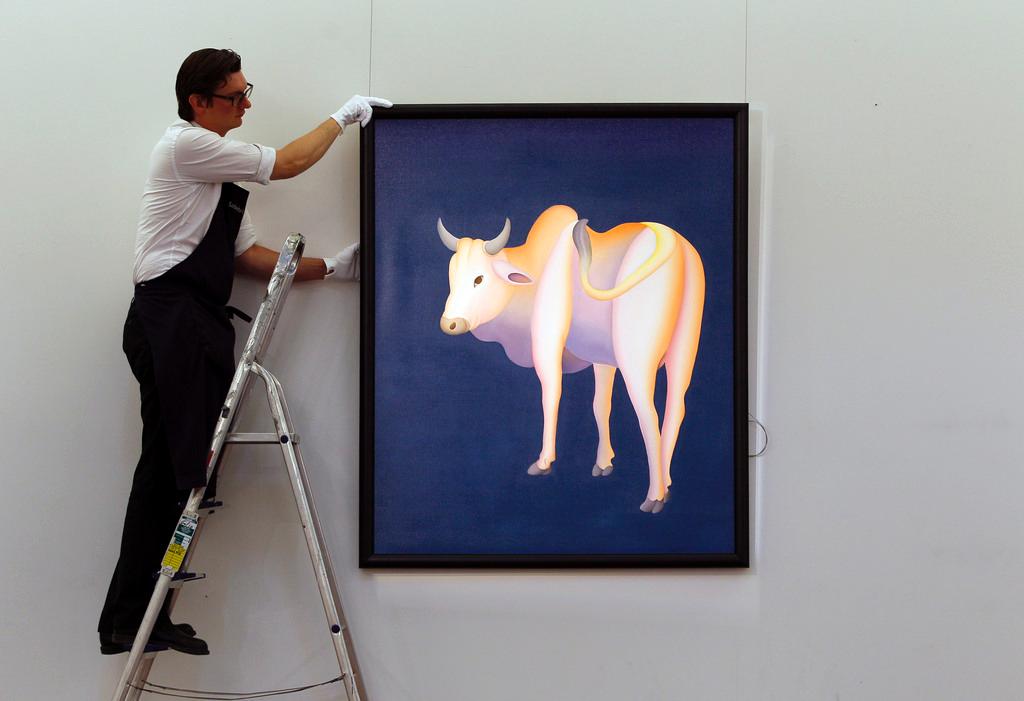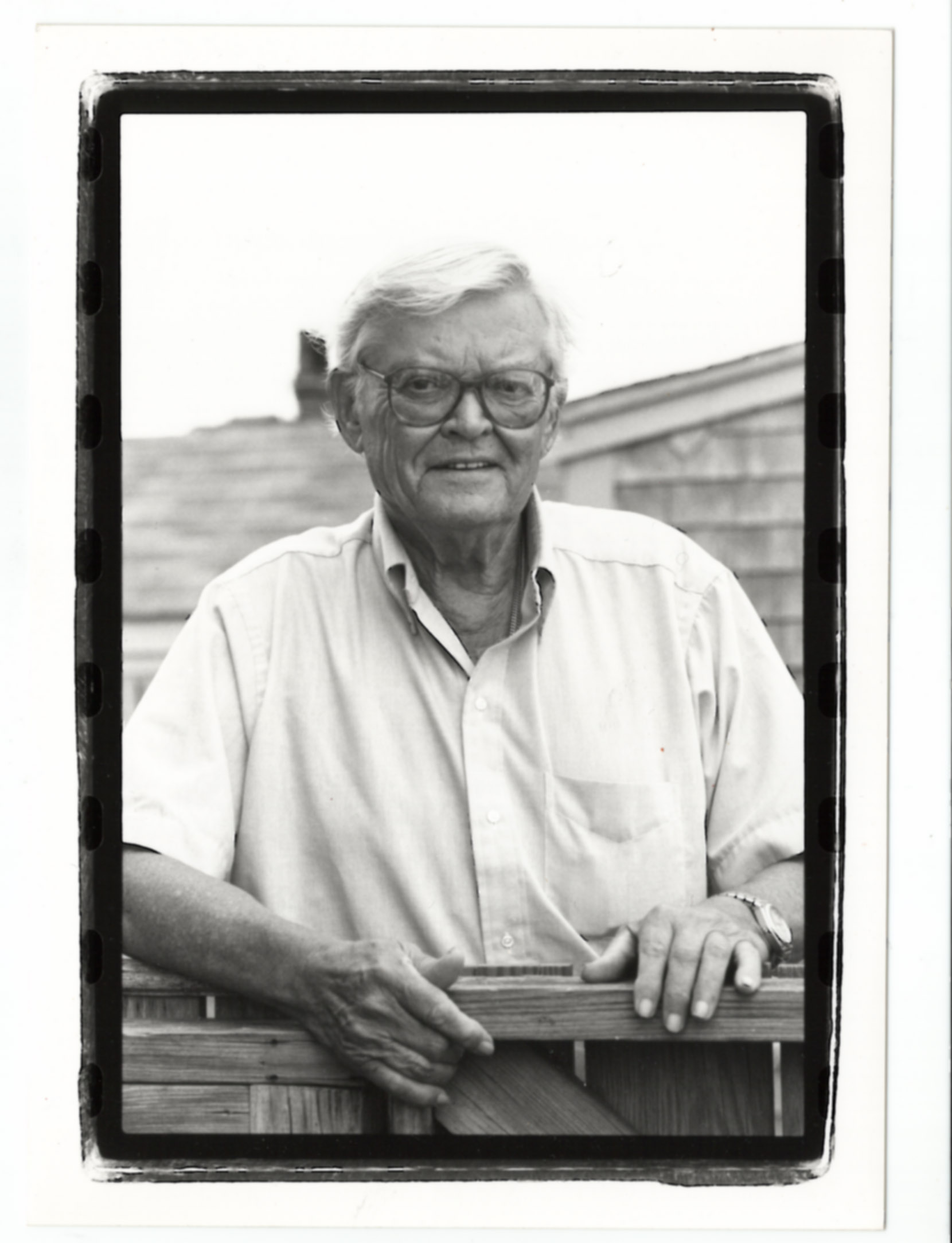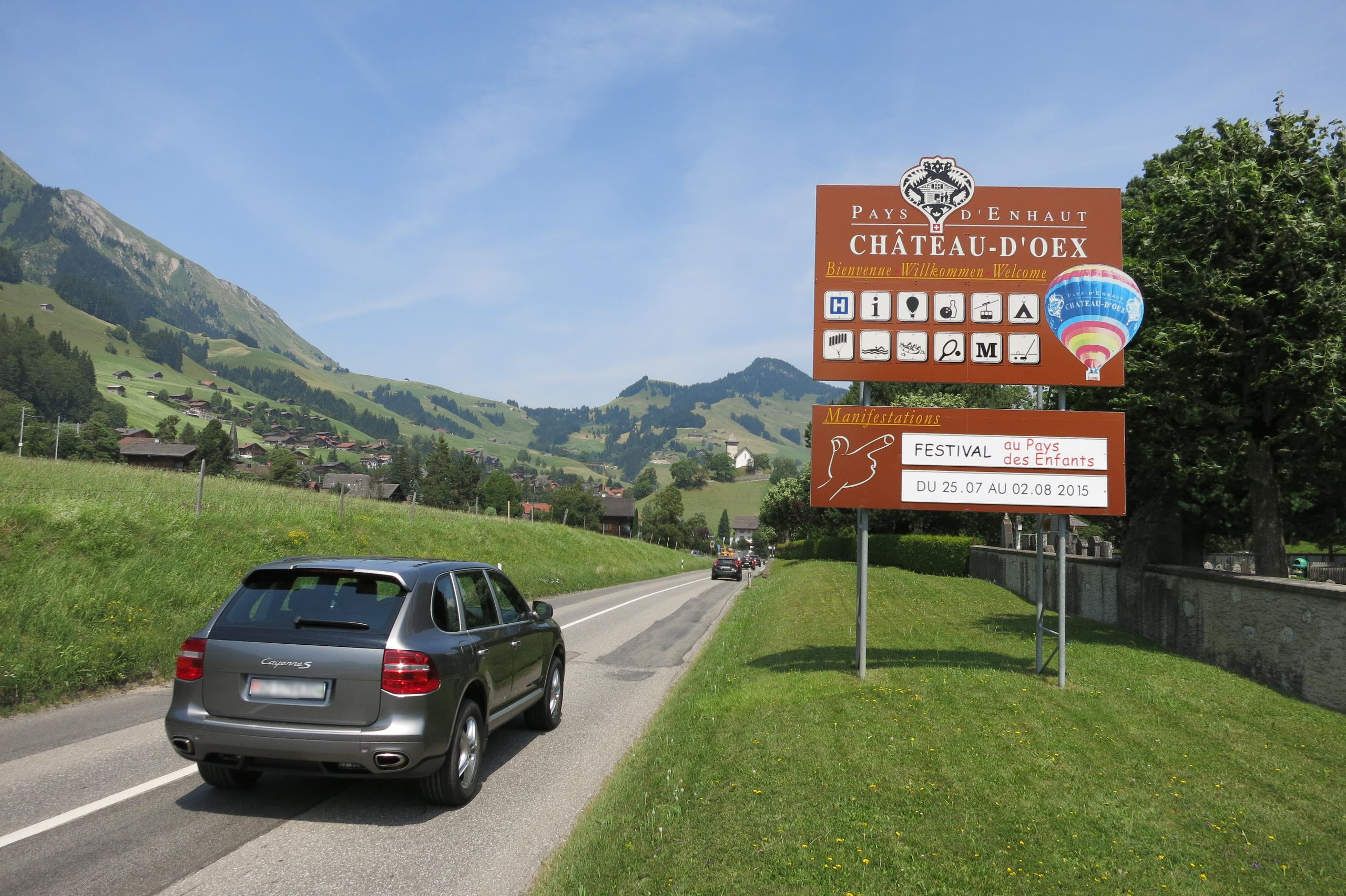Avalanche – a bold new show of public art in Gstaad

Nestled within the valleys of the Swiss Alps, Gstaad's underlying identity is that of a farming village – cows in their sheds and hay bales still dapple the mountainside – even though its picturesque wooden chalets host a super-wealthy elite of winter sports fans and socialites.
However, the changing environmental conditions of the town, and of similarly ritzy Swiss ski resorts, are forcing them to explore new ways of drawing crowds. “The fact is, there is no snow here anymore at the start of the winter,” says Swiss collector Maja Hoffmann, “so the valley has to reinvent itself.”
It was in this context that the New York-based curators Neville Wakefield and Olympia Scarry selected Gstaad for a series of outdoor exhibitions, “Elevation 1049” – Gstaad’s elevation in meters – which they initiated in 2014 in collaboration with Hoffmann’s Luma Foundation. Wakefield, who is British, was a curator of Frieze Projects at London’s Frieze Art Fair. The Swiss-born Scarry is an artist, and the granddaughter of American illustrator Richard Scarry, who lived in Gstaad.

More
Financial Times
External link“I spent time here as a child, and then later I started coming with Neville a lot,” Scarry explains. “We found ourselves inspired by the landscape, and we thought it would be interesting to invite contemporary artists to be inspired by it, too. There is a compelling contrast in the very essence of Gstaad between extreme wealth and the real-life local farming community here.”
The show’s second edition, Avalanche, has a programme of 11 sculptures, performances, videos and sound installations by 13 international artists. Many will remain on view until March 19; some, such as “Monarch”, American artist Sarah Morris’ refurbished exterior of the snow tram that brings visitors to Gstaad, will last for years.
“Ours is quite different from the usual model, where you take a sculpture and just plant it somewhere,” Wakefield says. “We’re really trying to have works that grow out of the conditions here, out of the landscape, out of the social history, out of the place itself.”
Outdoor treks
And unlike traditional public art, Avalanche is demanding of its viewers, requiring them to take long hikes, climb icy slopes, even don swimsuits. The artworks occupy both inhabited spaces and wild landscapes, from the town’s public pool to a distant glacier accessed via car, chairlift and cross-country ski.
Avalanche takes its name from the 1970s New York conceptual art magazine. Although the participating artists are not given directives, many explore the tensions inherent to change and the darker possibilities that lurk even in Gstaad’s overwhelming natural beauty – echoing the image of an avalanche, with its random, destructive power.
“From the producer side, I am interested in a discourse about other things that are happening in the art world – a kind of non-market discourse, art produced outside of the market conditions,” Hoffmann explains. “The idea was to take that conversation outside, using art that everyone can see and is free and open, and try to push the conversation into the larger public sphere.”

In that vein, French artist Morgane Tschiember and Scottish artist Douglas Gordon took cues from the legacy of Land Art for their thrilling collaborative performance on opening weekend, “As close as you can for as long as it lasts”. Inspired by Jack London’s 1902 short story “To Build a Fire”, which tracks the protagonist’s struggles to survive alone in the wilderness, Tschiember encircled a small, snow-rimmed lake with a ring of fire, while Gordon’s choreographed programme of smoke signals and soundtrack of howling wolves emanating from hidden speakers installed up and down the slopes contribute to a paralysing sense of unease.
“When we see a mountain it feels like a confrontation with this terrifying wall of the unknown,” Tschiember says. “There is something obscure, gothic, even melancholic about the mountain; there is an impulse to control it, somehow, to feel less afraid.”
Contrasts and discomfort
A similarly powerful visual dissonance characterises the first public sculpture of Belgian painter Michaël Borremans. Sited in the middle of a pristine expanse of snow, his 6-metre-high “Rosa”, taken from a series of his paintings called “Black Mould”, is a foam figure draped in quasi-ecclesiastical black robes and impaled upside-down. With its exposed legs flailing, it seems to have fallen from the sky – “like a dart,” Borremans says. “I like contrasts,” he adds, explaining that he modelled the costume on the garb of puppeteers at Japanese puppet shows. “Here, the situation looks hilarious, almost slapstick, and yet the figure itself feels very threatening – although it’s just an innocent puppet player.”
From a distance, Borremans’ work is dwarfed by the landscape and mountains. As a viewer approaches, however, the work’s monumental scale becomes apparent, even oppressive, suggesting something darker and more cynical.
Offering an experience delicately balanced between peaceful and jarring, the US sound artist Grace Hall has created an immersive installation in Gstaad’s pine-framed public pool. Swimsuits are required: only once the audience’s heads are underwater can they experience Hall’s poetry, broadcast through speakers. It feels at first like being back in the womb: her voice seems to be directed intimately into your ear. The poems speak hopefully about change, and exploring the transformation of states of matter – water into ice, or steam; obsidian as a state of sand. But interruption is coded into the installation; you are forced to come up for air: the poetry ends abruptly. “There is a lot of potential discomfort here, and also comfort,” Hall says. “The viewer has to enter a naked, internal space; your survival abilities shape the experience.”
“Ultimately, Avalanche is an experiment, a way of looking at this landscape and its changes through the prism of each artist’s experience and perspective,” Wakefield says. “A lot is at stake here: you can talk as much as you like about climate change, but we think that non-verbal action is really powerful.”
Copyright The Financial Times Limited 2017

In compliance with the JTI standards
More: SWI swissinfo.ch certified by the Journalism Trust Initiative




You can find an overview of ongoing debates with our journalists here. Please join us!
If you want to start a conversation about a topic raised in this article or want to report factual errors, email us at english@swissinfo.ch.